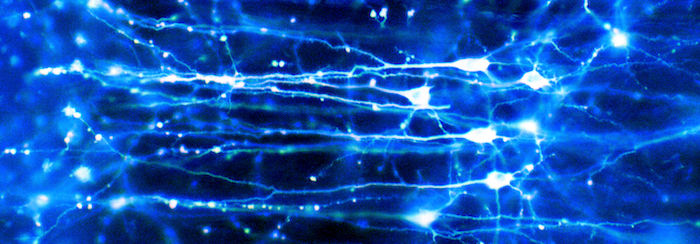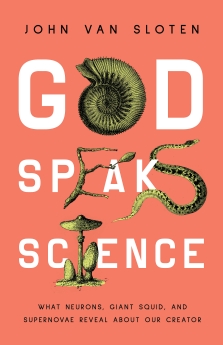
Neurons, Dr Jonathan Clark, Wellcome image library
I am challenged and inspired by this book’s approach – I fact I am inspired to have a go myself. It’s risky territory, from both a scientific and a theological perspective. It’s difficult to come up with simple and broadly helpful analogies of God’s character and actions from the created order, but it comes with a biblical precedent – Jesus did it. It’s hard to create new parables from nature without getting tied in knots of complicated science or overstating the case. It’s hard to come up with new metaphors, but it’s worth trying. For some people, these pictures will be just what they need to connect with God that day, or expand their spiritual horizons. Others won’t get the connection, but that’s ok – it’s worth missing the point with some in order to reach others in a fresh way.
The chapter that moved me was the one about the first sighting of a live giant squid in its natural habitat. I was excited by this news myself when it came out some years ago, so perhaps it’s not surprising that I connected with John Van Sloten’s description of the giant squid fulfilling its own particular calling as a deep-sea dweller. This animal’s existence resonates with fact that God’s acts are also largely unseen. It also has the largest eyes on the planet, and can remind us that as we observe creation with our own eyes we are seeing a reflection – however imperfect – of part of God’s character. We were made to discern God in what he has made. In fact, it is Christ at work in us that enables us to see Christ in creation – the one through whom everything was made.
When writing on this theme I tend to use a lot of qualifiers, because no analogy is perfect. The connections we make when we do natural theology are also very subjective, and don’t work for everyone. Van Sloten is less self-conscious, happily riffing on the scientific theme of each chapter, throwing out metaphors and parables that will no doubt resonate with many readers. His big question is – what specific part of the scientific story that’s being told shows us something specific about God? He’s not content with vague statements about awe, wonder or beauty – he wants details.
Most importantly, the author creates a new form of devotion: lectio scientia. Somewhat like lectio divina, which pores over the scriptures, inhabiting them imaginatively and dwelling on their meaning for the individual, lectio scientia is a spiritual search for meaning in a scientific story. At the end of each chapter he encourages the reader to try this of themselves, providing questions and thought-provoking reflections as a jumping off point.
At times the metaphors in this book feel a tiny bit over stretched, or didn’t connect with me. I don’t think that matters. The point is to try it, in collaboration (as John Van Sloten did) with scientists who know the material at a professional level as well as scholars who can help us to avoid over-interpreting the biblical text. The aim is to read God’s two books – scripture and creation – together, gaining new insight from reading them in light of each other. The world is so beautiful, vast, intricate and ordered, we have so much to gain from this way of thinking. This book is a great starter for anyone who wants to explore lectio scientia, and to try it out for themselves.
 God speaks science: What neurons, giant squid and supernovae reveal about our creator, by John Van Sloten, is available in paperback and e-book (Moody Publishing, 2023), 205 pages.
God speaks science: What neurons, giant squid and supernovae reveal about our creator, by John Van Sloten, is available in paperback and e-book (Moody Publishing, 2023), 205 pages.




